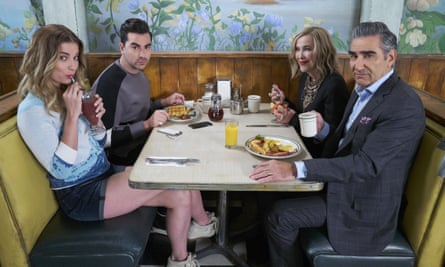If you log on to Netflix any time soon, you’re likely to see the words “play something” dangling below the profile icons on the menu screen. Click these words and you’ll be taken directly to the platform’s latest experiment in home entertainment: force feeding.
Everyone, at some point or another, has suffered from Netflix’s tyranny of choice; unsure of what to watch, you find yourself endlessly scrolling through submenus in the hope that you’ll find something – anything – that manages to meet all of your needs.
The “play something” button exists to do away with that. Press it and you’ll be automatically offered a show that the Netflix algorithm has determined will suit your tastes. And this makes sense. After all, Netflix has a mountain of data on your viewing habits. It knows what you’ve watched, when you’ve watched it, how long you watched it for and the precise moment you got bored. It already tailors its menus to your taste – even down to the appearance of a show’s thumbnail icons – so it seems like the next logical step to simply give you what it thinks you want.
But is it any good? I recently spent a day playing with play something, in the hope that it would bring me my new favourite show. Here’s how the experiment went.

First pick: Parks and Recreation. A pretty good effort. Netflix knows that I have watched almost every other Parks and Rec-style US sitcom available on the service, so it was a no-brainer to think that I would want to watch this. The problem is, though, that I have already watched Parks and Recreation, all the way through, twice. I just hadn’t watched it on Netflix which, as far as Netflix is concerned, is the same as never having watched it at all. Given that the bulk of Netflix’s catalogue still consists of buy-ins from other networks, this issue could crop up a lot.

Second pick: Arrested Development. Again, great choice. True, I had watched the first three seasons on TV, and then I bought them on DVD and watched them so often that I never need to see it again, but at least Netflix understood my taste. However, Netflix didn’t offer me the (good) first episode of Arrested Development from its (good) first season. It offered me a (terrible) episode from its (terrible) fifth season. Nor was this a random episode. In truth, I bailed on season five the day it was released, distraught that a series I used to love had become such a lumpen mess. Netflix was offering me the episode after the episode I bailed on, in the hope I’d give it a second chance. Bit needy, Netflix.

Third pick: Schitt’s Creek. Once again, Netflix knows me. But apparently not enough to know that I had already watched all of Schitt’s Creek on my wife’s profile. Next!

Fourth pick: Community. Great! I love Community! I know this because, like Parks and Recreation, I had already watched it before it arrived on Netflix. Maybe the fifth time would be a charm.

Fifth pick: The Office. Nope. Seen it. Saw it on ITV2 when it debuted in the UK. At this point I was starting to wish that the Netflix algorithm could gain full sentience, enter my brain and steal a full list of every television series I had ever watched on any platform over the course of my entire life, so it would be able to show me something new. Which probably isn’t a very healthy thing to wish from a big tech company, in all honesty.

Sixth pick: Stowaway. This was Netflix getting desperate. It had abandoned the tried and true method of just showing me popular American sitcoms from the last 15 years and was now giving me a new movie that was riding high in the top ten. The good news was that I had not previously watched Stowaway. The bad news was that, after 20 minutes, I realised that I definitely wasn’t in the mood to watch Anna Kendrick emote in space, and ducked out.

Seventh pick: Superstore. Finally, a success. I have never watched Superstore before – I’d never even really heard of it – but it had all the hallmarks of something I would like. It’s a modern American sitcom. It’s broad and silly and tender, and has a staggeringly talented cast. I was laughing within minutes of watching it. I Googled it, and found a Vox article entitled ‘How Superstore got so good’. At that point I was in, and gobbled up six episodes in a row. It might not be my favourite show of all time, but it is exceptional TV comfort food. I’m going to watch all of Superstore, and I’m going to love it. Guys, Superstore is really good. Why did nobody tell me? Thanks, Netflix.

Eighth pick: Love and Monsters. This felt like another example of Netflix just serving up something simply because it was popular. Love and Monsters might be great, but it wasn’t for me at that specific time. Experiment over.
By my reckoning, play something has an 87.5% failure rate. In eight attempts, only once did it offer something that a) I hadn’t already seen and b) I actually wanted to watch. It seems to be the streaming equivalent of buying someone a book for their birthday. Netflix and I have been together for long enough that it assumes I know what I like. But my tastes are complicated and flighty, and I carry a lot of baggage. The chances of it hitting my sweet spot at any given time are vanishingly small. And besides, only a monstrous egotist would buy someone a book for their birthday.
Play Something is fun, but my guess is that it’ll be a novelty. People will try it once or twice out of curiosity and then abandon it in favour of things they know they’ll like. It’s a nice try, but it’s basically channel hopping. Wasn’t Netflix supposed to end all that?

Comments (…)
Sign in or create your Guardian account to join the discussion